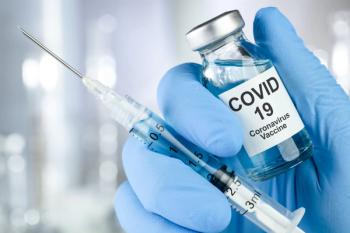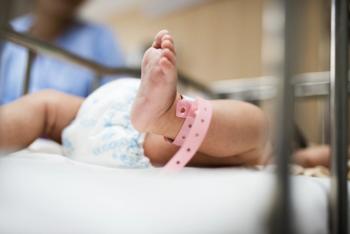
The safety of the Pfizer/BioNTech COVID-19 vaccine in pregnant women, for both mother and baby, has been dependent on observation during the rollout. A large population trial provides further support for the vaccine’s safety.
Ms. Hester is Content Specialist with Contemporary OB/GYN and Contemporary Pediatrics.

The safety of the Pfizer/BioNTech COVID-19 vaccine in pregnant women, for both mother and baby, has been dependent on observation during the rollout. A large population trial provides further support for the vaccine’s safety.

A report in Pediatrics offered information on the clinical presentation, prevalence, and outcomes of a simultaneous serious bacterial infection with mastitis.

A panel discussion at the 2021 American College of Obstetrics and Gynecology’s (ACOG) Annual and Scientific Meeting, being held virtually April 30-May 2, offers insight into how the COVID-19 pandemic has changed telehealth in ob/gyn.

In a briefing this morning, the Infectious Diseases Society of America (IDSA) stressed the continued importance of coronavirus 2019 disease (COVID-19) control measures that have been there from the start.

The latest on testing guidelines for Zika from the CDC. Plus: Are corticosteroids effective when administered only hours before delivery? Also, a look at the prevalence of hepatitis C among pregnancy women in the United States.

A study examines if ospemifene is linked to increased hot flashes. Plus: Do certain cerclage sutures increase the risk of preterm birth? Also, do pregnancy delays actually decrease the risk of microcephaly as a result of congenital Zika infection?

A new study looks at whether ovary-sparing hysterectomies can lead to early menopause. Plus: Does betamethasone reduce respiratory complications in preterm infants? Also, the impact of the vaginal microbiome on preterm birth.

A new study wonders if allowing a longer labor could help reduce rates of cesarean delivery. Plus: Does placing a cervical pessary prevent preterm birth? Also, a look at why teenaged LARC users aren't using condoms for STI prevention.

A study examines whether computer-assisted detection on mammography provides sufficient benefit for the cost. Plus: Do first-time pregnancy cesarean deliveries increase the preterm birth in subsequent pregnancies. And, is conventional wisdom surrounding pregnancy and cancer accurate?

Have pelvic guideline changes led to a reduction in other recommended screenings? Plus, how does menopause impact future cardiovascular health? And: Does childhood stress lead to negative obstetric outcomes?

A recent meta-analysis examines if D&C can lead to future premature birth. Plus, does counseling on LARCs lead to a reduction in pregnancy rates. And: does exposure to DDT while in utero mean an increased risk of breast cancer later in life?

New research looks at the possibility that women who were themselves born prematurely are at greater risk of delivering their children prematurely. Also research on how much women worry about the genetic risks of their breast cancer and a new algorithm for stratifying breast cancer prevention.

In the latest volley in the ongoing controversy regarding the safety of some forms of hysterectomy, the country’s largest insurer will soon begin requiring prior authorization for many of the procedures. The action, taken by UnitedHealthCare, takes effect April 6, 2015 and does not apply to outpatient vaginal surgeries.

Contemporary OB/GYN provides information on the latest research on the possibility of a link between cardiovascular disease and spontaneous preterm birth; whether or not contraceptive expiration dates might be conservative; and helping answer the question of whether or not the HPV vaccine causes more sexual activity.

Women who receive the tetanus toxoid, reduced diphtheria toxoid, and acellular pertussis vaccine (Tdap) may not be at increased risk of preterm birth or other adverse birth outcomes, according to a new study in JAMA.

According to a recent prospective cohort study in Human Reproduction, women who have a history of severe acne in their adolescent years may be at greater risk of developing endometriosis.

Published: August 17th 2016 | Updated:

Published: April 27th 2016 | Updated:

Published: March 30th 2016 | Updated:

Published: April 15th 2015 | Updated:

Published: October 7th 2015 | Updated:

Published: June 6th 2017 | Updated: